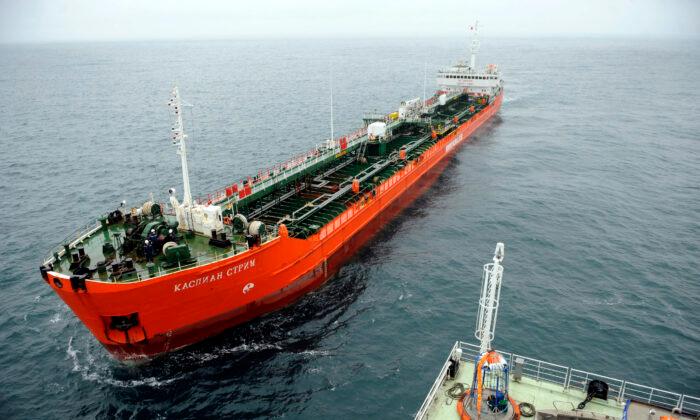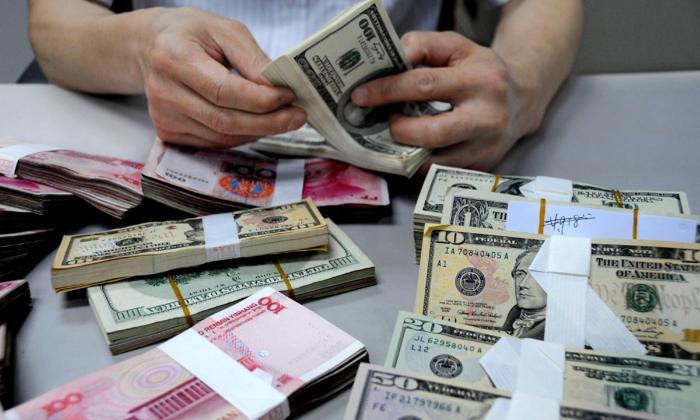The European Union applied sanctions on the importation of Russian oil to reduce its dependence on Russia as a source of energy. The EU sanctions combined with those applied by the United States have caused Russia to deeply discount its oil prices. The discounts have provided an opportunity for China and India to increase the volume of oil imported from Russia.
On June 15, the price of U.S. West Texas crude oil rose from $93/barrel before the outbreak of the Russia-Ukraine war to $115/barrel, while the price of European Brent crude oil rose from $93/barrel to $120/barrel.
On the same day, due to the EU and U.S. sanctions, the price of Russian Urals was $34/barrel lower than the price of Brent crude. This provided an opportunity for India, which is facing high inflationary pressures, to buy the lower-priced crude oil.
Unlike India’s open tenders for Russian oil imports, Chinese oil companies are not so transparent. Instead, they are quietly importing Russian oil for fear of being hit with secondary sanctions.
According to the International Energy Agency, China is the largest single buyer of Russian oil. In 2021, China imported an average of 1.6 million barrels of Russian crude oil per day.
Also in May, China received an additional 800,000 BPD of Russian oil via pipelines under an inter-governmental agreement. The actual May total is 1.9 million BPD, which is 15 percent of China’s total demand.
Sanctions Drive Supply Chain Restructuring
Russia is the world’s third-largest oil producer after the United States and Saudi Arabia, as well as the world’s largest refined oil exporter and second-largest exporter of crude oil.In December of 2021, Russia exported 7.8 million BPD of oil and products, of which 4.5 million went to Organization for Economic Co-operation and Development (OECD) member countries.
EU Council President Charles Michel tweeted the new sanctions would immediately affect 75 percent of Russia’s oil exports to EU countries. S&P Global Commodity Insights estimates Russian crude oil exports will drop by 2.1 million BPD within six months due to the sanction. By the end of the year, Russia can expect an additional loss in sales of 1.2 million BPD of oil refinery products.
However, the S&P Global analysis at the end of May suggests the EU’s sanctions against Russia have mainly driven the restructuring of the global supply chain. While the EU has worked to reduce its dependence on Russian oil, China and India have done the opposite and capitalized on the drop in Russian oil prices caused by the sanctions. At the same time, Middle Eastern producers have rerouted their oil exports to EU customers.
Organization of the Petroleum Exporting Countries (OPEC) ministers said recently that the global oil market supply is balanced and the current spike in fuel prices is mainly due to refinery capacity shortages and out-of-control geopolitics.
India’s Economic Considerations
India’s attitude is different from that of the United States, Japan, and Australia.Kapadia said India’s main oil suppliers have traditionally been Iraq, Saudi Arabia, and the United Arab Emirates but those countries decided to increase their oil prices. As a country that imports 80-85 percent of its oil, India can hardly afford to not take advantage of Russia’s 20 percent discount on crude oil prices.
But despite this increase in oil imports from Russia, India still shares a common strategic goal with the United States of “containing the Chinese Communist Party (CCP)” in the Indo-Pacific region.
Russia and China Distrust Each Other
On the evening prior to the EU announcing its sanctions on Russian oil imports, Russian Foreign Minister Sergey Lavrov said the Kremlin would focus on developing relations with China since relations with the United States and the EU are severed.Trade between China and Russia has been increasing over the past 20 years, reaching a record $147 billion by 2021.
However, the Council on Foreign Relations (CFR), a non-partisan think tank, said in its June 14 report on Russia-China relations that Russia’s economic dependence on China is much greater than vice versa, which raises concerns in Moscow.
In 2020, China’s trade with Russia accounted for only 2 percent of China’s total trade. In comparison, Russia’s trade with China accounted for 18 percent of Russia’s total trade. In addition, Russia relies on Chinese companies and banks to make key investments in its energy and telecommunications infrastructure.
Now that the EU has imposed sanctions on Russian oil imports, Russia is likely to become more dependent on trade with China. China has a huge demand for energy which makes Russia’s rich energy resources of oil, natural gas, and various minerals, very attractive.
Russia-China trade is already largely energy-based. In 2020, over half of Russia’s exports to China were energy-related. By 2021, Russia provided China with 16 percent of its crude oil imports, 15 percent of its coal imports, and 10 percent of its natural gas imports.
But despite this activity, the CFR report also stated there is a lot of mistrust between the two countries.
For example, many Russian and Chinese officials, business leaders, and citizens do not trust each other. Both Russian and Chinese people have expressed nationalistic sentiments that belittle each other, and companies from both countries have expressed difficulties in working together. Despite the long border between the two countries, tourism, and academic exchanges are very limited.
Both the Communist regime and Russia are de-Americanizing, but Russia is increasingly using the euro in its foreign trade, while China is using the yuan and ruble more. Currently, China has not joined Russia’s SPFS financial system and is expanding its Renminbi payment system.
As to defense matters, Russia and China have strengthened military cooperation since 2014, but the sale of Russian arms to China has declined in recent years. One explanation for this is Russia’s fear that China would steal its technology.
In contrast, India’s relationship with Russia has remained friendly and stable since the Cold War. Russia has supplied India with weapons and much of India’s oil. This cooperative relationship helps to alleviate Russia’s dependence on China for its energy exports.






Friends Read Free